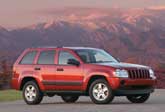Recent Articles
Popular Makes
Body Types
Employee Pricing Primer
How to use employee pricing to get a great deal

Chrysler, Ford, and General Motors are running aggressive sales campaigns touting employee pricing on the majority of their cars and trucks. GM started the feeding frenzy at the beginning of June, by offering the same price that company employees pay for vehicles to all consumers nationwide. Typically, employees pay 2-3 percent under the dealer’s invoice price for a new car, and can apply any applicable rebates or dealer incentives to that low fixed price. As a result of GM’s Employee Pricing for Everyone sales campaign, the company saw a huge spike in sales – by nearly 50 percent year-over-year – encouraging Chrysler and Ford to jump on the bandwagon for July, and prompting GM to extend its successful program by a month. The programs could extend through the end of August if Detroit’s traditional Big Three see a continued need to move the metal.
How does it Work?
Essentially, employee pricing sets a fixed, no-haggle price tag on a vehicle that is below the dealer’s invoice cost – the price the dealer paid for the car. However, in exchange for setting such a low price on the vehicle, Chrysler, Ford and GM have reduced the size of the rebates and incentives available on most models, and have boosted the dealer holdback a couple of percentage points to help the dealership recoup lost profits. The end result is that employee pricing is a terrific marketing strategy, but the actual transaction price of the vehicle isn’t much different from back in May, when smart negotiators could get the same exact deal.

What Does it Mean?
By setting a low fixed price below dealer invoice and making available rebate values known to the customer, Chrysler, Ford, and General Motors have effectively transformed their dealerships into no-haggle car lots. The price of the car is the same no matter what dealership you choose within your region. All you need to do is get a great price on your trade-in, sign on the dotted line, and drive your new car home.However, certain vehicles are not included in the employee discount plans. For example, the plans only apply to 2005 model year cars. At Chrysler, the SRT performance models and the Dodge Sprinter van do not come with a discount. At Ford, forget about driving a bargain on the Ford GT, Mustang or Escape Hybrid. And GM isn’t giving away Chevy Corvettes or Pontiac GTOs. Also, most commercial-grade trucks with more than a one-ton payload capacity are off the list.

Benefits
Rather than traipse all over town spending hours negotiating the best deal, consumers can go to the nearest Chrysler, Ford or GM showroom to buy a new car or truck because the employee discount price is the same at every regional dealer, and any applicable rebates are the same at every regional dealer.This shift to no-haggle prices is a big hit with customers, who, according to one recent poll, would rather get a root canal than negotiate the price of a new car.

Are the Discounts Real?
Yes, the employee pricing discounts are for real, but with accompanying reductions in rebate money and low-APR financing, the end cost to the customer is not much different from what strong negotiators would have paid a few months ago. Employee Pricing is ultimately a marketing twist on the age-old rebates and incentives shell game. And it’s been a raging success.
